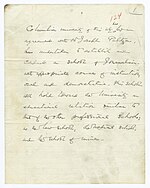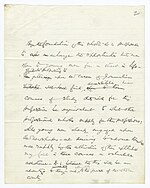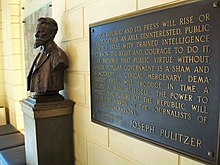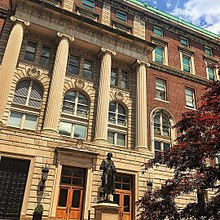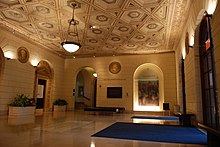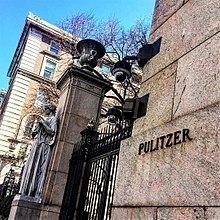
Nicholas Berthelot Lemann is an American writer and academic, and is the Joseph Pulitzer II and Edith Pulitzer Moore Professor of Journalism and Dean Emeritus of the Faculty of Journalism at the Columbia University Graduate School of Journalism. He has been a staff writer at The New Yorker since 1999. Lemann was elected to the American Philosophical Society in 2022.

The Pulitzer Prize is an award administered by Columbia University for achievements in newspaper, magazine, online journalism, literature, and musical composition in the United States. It was established in 1917 by provisions in the will of Joseph Pulitzer, who had made his fortune as a newspaper publisher.

The Medill School of Journalism is the journalism school of Northwestern University. It offers both undergraduate and graduate programs. It frequently ranks as the top school of journalism in the United States. Medill alumni include over 40 Pulitzer Prize laureates, numerous national correspondents for major networks, many well-known reporters, columnists and media executives.

The UC Berkeley Graduate School of Journalism is a graduate professional school on the campus of University of California, Berkeley. It is among the top graduate journalism schools in the United States, and is designed to produce journalists with a two-year Master of Journalism (MJ) degree. It also offers a summer minor in journalism to undergraduates and a journalism certificate option to non–UC Berkeley students.
The E. W. Scripps School of Journalism is part of the Scripps College of Communication at Ohio University. Founded in 1924, the school has been recognized by The Associated Press and U.S. News & World Report for excellence in instruction and research in the fields of journalism and mass communications. The program was recently recognized as a Center of Excellence by the Ohio Board of Regents, and has attracted more than $54 million in grants, awards and investments. The School of Journalism is accredited by the Association for Education in Journalism and Mass Communication. The school's current director as of March 2020, Edith Dashiell, joined OHIO in 1992.
Sheila S. Coronel is a Philippines-born investigative journalist and journalism professor. She is one of the founders of the Philippine Center for Investigative Journalism (PCIJ). In 2006, she was named the inaugural director of the Stabile Center for Investigative Journalism at Columbia University's Graduate School of Journalism. In 2014, she was appointed the School's Academic Dean, a position she held until the end of 2020.
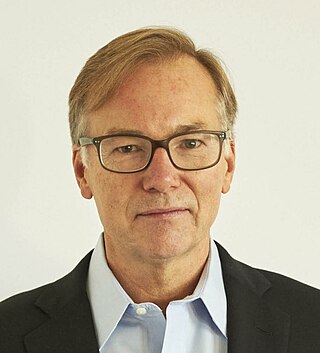
Steve Coll is an American journalist, academic, and executive.
The Missouri School of Journalism housed under University of Missouri in Columbia is one of the oldest formal journalism schools in the world. The school provides academic education and practical training in all areas of journalism and strategic communication for undergraduate and graduate students across several media platforms including television and radio broadcasting, newspapers, magazines, photography, and new media. The school also supports an advertising and public relations curriculum.
The Grady College of Journalism and Mass Communication is a constituent college of the University of Georgia in Athens, Georgia, United States. Established in 1915, Grady College offers undergraduate degrees in journalism, advertising, public relations, and entertainment and media studies, and master's and doctoral programs of study. Grady has consistently been ranked among the top schools of journalism education and research in the U.S.

Mei Fong, also known as Fong Foongmei (方凤美), is a Malaysian-born American journalist who was staff reporter for the China bureau for The Wall Street Journal. In April 2007, she was awarded the Pulitzer Prize for International Reporting as part of the bureau's "sharply edged reports on the adverse impact of China's booming capitalism on conditions ranging from inequality to pollution." She is "believed to be the first Malaysian ... to achieve this distinction."
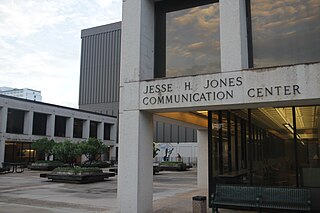
The Moody College of Communication is the communication college at The University of Texas at Austin. The college is home to top-ranked programs in advertising and public relations, communication studies, communication and leadership, speech, language and hearing sciences, journalism, and radio-television-film. The Moody College is nationally recognized for its faculty members, research and student media. It offers seven undergraduate degrees, including those in Journalism, Advertising, and Radio-Television-Film, and 17 graduate programs. The Moody College of Communication operates out of the Jesse H. Jones Communication Complex and the Dealey Center for New Media, which opened in November 2012.
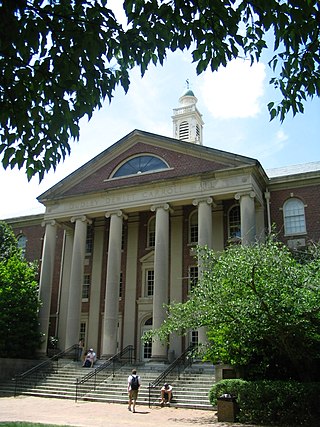
The UNC Hussman School of Journalism and Media is a nationally accredited professional undergraduate and graduate level journalism school at the University of North Carolina at Chapel Hill. The school, founded in 1950, is ranked competitively among the best journalism schools in the United States. The school offers undergraduate degrees in media & journalism as well as advertising & public relations. It offers master's degrees in journalism, strategic communication, and visual communication and doctoral degrees in media & communication.
Bruce Shapiro is an American journalist, commentator and author. He is executive director of the Dart Center for Journalism and Trauma, a resource center and think tank for journalists who cover violence, conflict and tragedy, based at the Columbia University Graduate School of Journalism. In 2014 he received the International Society for Traumatic Stress Studies Public Advocacy Award recognizing "outstanding and fundamental contributions to the social understanding of trauma."
The Dart Center for Journalism and Trauma is a resource center and think tank for journalists who cover violence, conflict and tragedy around the world. A project of the Columbia University Graduate School of Journalism in New York City, the Dart Center also operates Dart Centre Europe, based in London; Dart Centre Asia Pacific, based in Melbourne; and a research node at the University of Tulsa. The Dart Center's mission is to improve the quality of journalism on traumatic events, while also raising awareness in newsrooms of the impact such coverage has on the journalists telling the stories.

Sheri Fink is an American journalist who writes about health, medicine and science.

Daniel Zwerdling is an American investigative journalist who has written for major magazines and newspapers. From 1980 to 2018 he served as an investigative reporter for NPR News, with stints as foreign correspondent and host of Weekend All Things Considered from 1993 to 1999. Zwerdling retired from NPR in 2018.
Stephen B. Shepard is an American business journalist and academic who served as editor-in-chief of BusinessWeek magazine and was the founding dean of the CUNY Graduate School of Journalism.
Joshua Friedman is an American journalist who worked 32 years for newspapers and won a Pulitzer Prize in 1985. He formerly chaired the Committee to Protect Journalists and directed International Programs at Columbia University Graduate School of Journalism. At the journalism school he also directed the Maria Moors Cabot Prize, inaugurated in 1939, which annually recognizes outstanding coverage of the Americas by journalists based there. He worked at Columbia as either full-time or adjunct faculty since 1992. European Journalism Centre (EJC) and the Georgian Institute of Public Affairs (GIPA), established the annual GIPA-Friedman prize in 2012 to honor the excellence in journalism in the South Caucasus country. Friedman is on the board of the committee to Protect Journalists and served as an early chair of CPJ. He is on the advisory board of the Dart Center on Journalism and Trauma. Friedman currently serves as vice-chair at the Carey Institute for Global Good and is also on the advisory board of the institute's Nonfiction Program.
Patrick Farrell is a Pulitzer Prize-winning American photojournalist for the Miami Herald.

